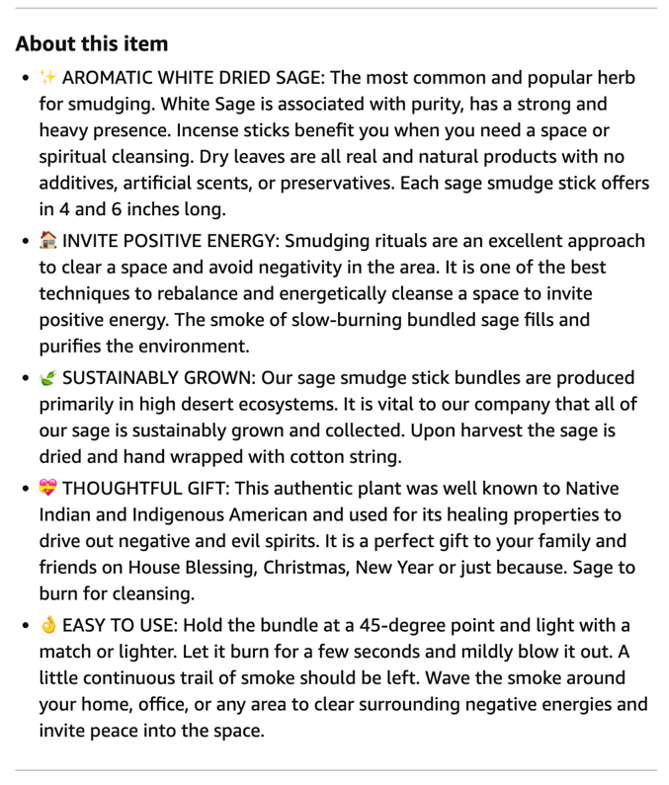Amazon & Walmart SEO guide: product listing requirements and why they matter

Brian Hennessy
Talkoot CEO and Co-Founder
Landing on the first search results page of Amazon or Walmart is like striking gold for sellers. And quality content is a big part of how you do that. Across both marketplaces, high-quality, keyword rich content is proven to improve customer experience, increase your conversion rate and drive more traffic to your product page. It also lowers returns and leads to better reviews and more 5-star ratings.
But content requirements for product listings can differ significantly between the two retailers. Even more, given the differing quirks of their algorithms, you need to be sure you’re focusing your efforts on the correct content types for each marketplace to ensure you’re getting maximum traffic and conversion.
In this blog post, we’ll explore the specific differences in content requirements for product page listings on Amazon and Walmart. We’ll also discuss the particular quirks of each of their search algorithms and what drives greater product discovery and traffic.
Amazon=strict father, Walmart=forgiving mother
Amazon’s mission to be “Earth’s most customer-centric company” makes an appearance in its product content requirements. Amazon is known for strict content requirements designed to ensure a consistent and high-quality shopping experience for customers. Walmart, on the other hand, is generally less strict, but still has its own peculiarities when it comes to product page content requirements.
Let’s dive into each content type and each marketplaces’ differing requirements:
Product Title
On both sites, the product title does some very heavy lifting when it comes to search results. But don’t confuse product title with product name. Your product title should include your product name, but it should also be as descriptive as possible, helping the consumer understand what they’re buying, who it’s designed for and what it’s used for.
Amazon’s guidelines allow for longer product titles, usually up to 200 characters, depending on the category. Amazon recommends product titles to be informative, with a maximum length of 200 characters. Titles should include the brand name, product name, and any relevant keywords. Make sure you use up that whole character count to maximize SEO.

Amazon’s added character count allows many more SEO long-tail keywords.
Walmart typically prefers shorter, more concise, and informative product titles, with a recommended length of 50-75 characters. Titles should include the brand name, product name, color and gender, if applicable. For instance, a Fashion listing’s Title might be constructed like this: Brand + Gender + Style Name (if applicable) + Descriptive Feature (if applicable), Material, Clothing Size + Pack Count.

Walmart allows SEO keywords, but forces retailers to keep it more concise and readable.
Bullet Points/Key Features
Both Amazon and Walmart allow for up to five bullet points that should highlight key features, benefits, and specifications of the product. For Walmart, each bullet point can be up to 200 characters. For Amazon, each bullet point can be up to 250 characters.
On Amazon, you’ll want to concentrate your SEO efforts on Titles and Key Feature bullet points. Though Amazon’s search algorithm is a black box, it is widely understood that titles and bullet points are prioritized for keyword indexing due to their prominence on the product page.

Use the entire character count of each bullet to answer all your shoppers’ questions.
Description
When it comes to the description, Amazon, and Walmart both agree. Each allows for up to 2,000 characters in the product description. The description should provide additional details about the product, such as its uses, materials, and care instructions.
 Include information that accurately portrays the product and how it can be used by your customers.
Include information that accurately portrays the product and how it can be used by your customers.
Images
On Amazon you need at least one main product image but are allowed up to eight additional images. Images should be high-quality and showcase the product from multiple angles. Amazon requires a minimum image resolution of 1,000 x 1,000 pixels for zoom functionality and mandates a white background for the main product image and explicitly prohibits watermarks, logos, or text overlays.
Walmart requires at least one main product image and allows for up to nine additional images. Images should be high-quality and showcase the product from multiple angles. Walmart requires a minimum image resolution of 500 x 500 pixels, with 1,000 x 1,000 pixels or higher preferred for zoom functionality. They also recommend using a white background and avoiding any watermarks, logos, or text overlays.
Backend Keywords
Only available on Amazon, backend Keywords are one final content type that you shouldn’t ignore. Backend Keywords are limited to 250 bytes (characters) and are vital for search optimization. Though they’re not consumer-facing, they provide additional context and relevant terms for the A9 algorithm, improving product discoverability in search results. By incorporating the right long-tail keywords, sellers can greatly improve their audience reach.
See how brands use Talkoot’s channel templates to drive conversion.
Book a demo >
Beyond Requirements: Differences in search algorithm
Walmart and Amazon use different search algorithms to rank products in their search results pages. Here are some of the key differences between the two:
Title Importance: Walmart places more weight on the title of the product, whereas Amazon considers other factors such as product description, bullet points, and reviews.
Keyword Usage: Walmart’s algorithm is said to prioritize exact keyword matches, while Amazon’s algorithm is more advanced in analyzing the context and relevance of the keywords used.
Structured Data: Walmart has stricter guidelines for structured data, requiring specific formatting and more precise information, while Amazon is more lenient in this regard.
Content Duplication: Walmart has stricter rules against duplicated content, while Amazon allows for more flexibility in terms of product pages with similar content.
Given these differences, here are some tips on how to optimize your product page content for each platform:
For Walmart, use exact keyword matches in your title, description, and bullet points. Follow Walmart’s structured data guidelines closely to ensure that your product page is accurate and complete. You can find those here. Avoid duplicating content from other product pages on Walmart or other platforms.
For Amazon, focus on the relevance of your keywords and use variations of your target keywords (e.g, SUP and Stand Up Paddle Board) to increase your visibility. Since Amazon takes shoppers’ preferences into account, use a combination of descriptive and persuasive language in your title, bullet points, and description to provide as much information as possible about your product. Include customer reviews and ratings on your product page to increase credibility and improve your search ranking.
Content optimization never ends
Whether selling on Amazon or Walmart, most sellers have a set it and forget it mindset when it comes to detail page content. Smart sellers, on the other hand, continually update their product content to ensure it matches shoppers’ current search intent. This means updated product content to reflect seasonal and occasion-based search queries.
A simple change like “Summer-weight fleece” to “Winter mid-layer fleece” can help you convert more and rank higher for the same product throughout the year. Targeting seasonal and occasion-based keywords will capture shoppers browsing products at different times of the year. More importantly, it will help your products rank on the first page of Amazon and Walmart search results.
How Marketplace sellers are using Talkoot
Continually refreshing your content to match shoppers search intent can seem overwhelming. But a tool like Talkoot can make optimizing and updating product content a breeze.
Its AI-writer can rewrite your content, incorporating new seasonal keywords in a matter of seconds. It can craft unique, search-optimized titles and bullet points for every product. Beyond AI description writing, Talkoot has many other features to help over-worked marketplace sellers manage their content with less time and effort:
Bulk edits: Add a Circle-R, or switch ‘waterproof’ to ‘water-resistant’ across your entire catalog, or any subsection with a few clicks.
Title templates: Talkoot can easily switch out search-optimized titles to match seasons or occasions.
Carryover: Talkoot automatically pulls data and previous descriptions forward from season to season for hassle-free content reuse.
Channel visibility: Users can easily view and compare all product content, images, and data across your whole catalog, ensuring your voice stays consistent.
If you’re looking for a quick way to improve year-round sales growth across your whole catalog without adding a lot of extra work, Talkoot might be your ticket. Book a demo to begin.
